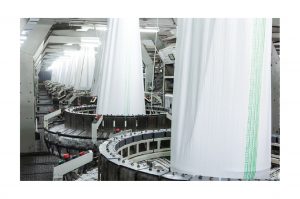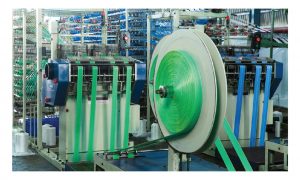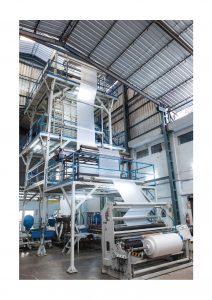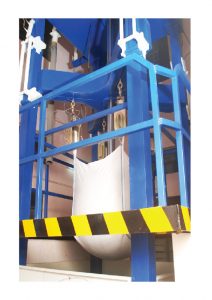Flexible intermediate bulk containers (FIBCs), also known as “big bags,” “bulk bags,” and “bulk sacks,” were first manufactured in the late 1950s or early 1960s. There is some controversy as to where the first FIBCs were made; however, it is known that FIBCs were made in the United States, Europe, and Japan during the time period mentioned above. The first FIBCs were constructed with heavy-duty PVC-coated nylon or polyester where the cut sheets are welded together to form the FIBC. These FIBCs were made with integrated lift slings around the container, or attached to a specially made pallet, or a metal lifting device that the container sat on. The handling devices allowed the container to be filled from the top and discharged from the bottom.
The rapid growth in Europe in the manufacturing of FIBCs occurred in the mid-1970s during the oil crisis. The oil-producing countries building program required large quantities of cement. The demand for cement was shipped in FIBCs at the rate of 30,000-50,000 metric tons per week from Northern Europe, Spain, and Italy to the Middle East.
The modern FIBC transports a growing figure of over 250,000,000 metric tons of product each year and is used to handle, store and move products as varied as cereals to powdered chemicals and flour to animal feeds. With a capacity of up to 3 m3 and load capability ranging from 0.5 to 2 metric tons. FIBCs are highly cost effective, recyclable and ideal for virtually any free-flowing granule, powder, pellet or flake. FIBCs are also being developed to hold and filter fluid products.






